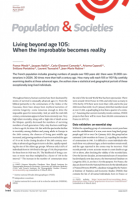
@@src2@@
Gens de Marrakech. Géo-démographie de la ville Rouge
Géo-démographie de la ville Rouge
Collection : Cahiers
n° 164, 2009, 352 pages
Préface de Jamal Bourchachen
Introduction
PREMIÈRE PARTIE
Maghreb, Maroc, Marrakech : évolutions historiques et démographiques
- Chapitre 1 • Mille ans de démographie au Maghreb : de la stagnation à l'urbanisation
- Chapitre 2 • Maroc des villes et des champs : une démographie à deux vitesses ?
- Chapitre 3 • Marrakech, entre le zaher et le baten, l'apparence et le caché
DEUXIÈME PARTIE
Quelle insertion économique pour Marrakech ?
- Chapitre 4 • Économie duale et fragilité de l'emploi à Marrakech
- Chapitre 5 • Les métiers de l'informel, une insertion par le bas ?
- Chapitre 6 • Moukef, joutia, souks : les carrefours de l'informel
TROISIÈME PARTIE
Les nouvelles configurations de l'habitat à Marrakech
- Chapitre 7 • L'espace urbain, des origines à la fin du protectorat
- Chapitre 8 • La place de l'habitat populaire aujourd'hui
- Chapitre 9 • Les nouvelles représentations de la ville ancienne
- Chapitre 10 • Cohabitation et requalifications sociales
Conclusion générale











